Top 5 satellite phones for off-grid situations
Table of Contents
When it comes to staying connected in the most remote and extreme environments, satellite phones are the go-to solution. Unlike traditional cell phones that rely on land-based cell towers, satellite phones communicate directly with satellites orbiting the Earth. This means they can provide coverage in places where no other form of communication is available. In this article, we will look at the top 5 satellite phones on the market today.
Iridium 9555
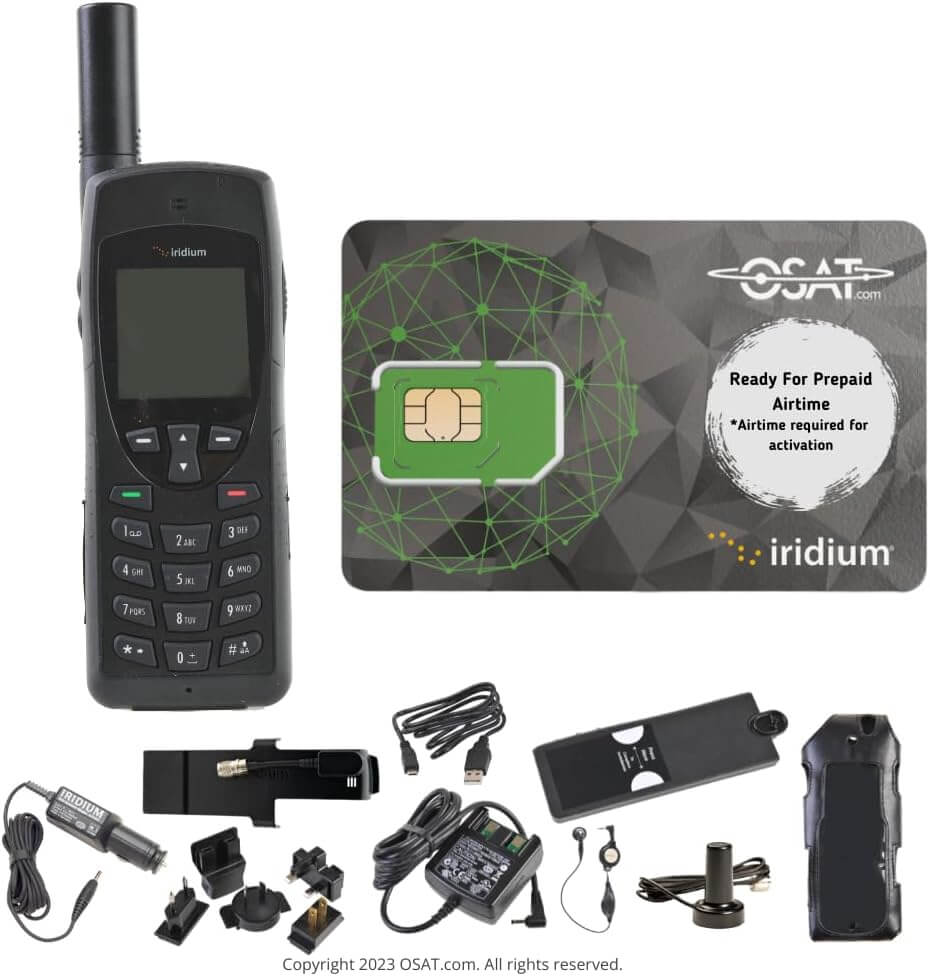
The Iridium 9555 is a well-established name in the world of satellite phones. Manufactured by Iridium, a company known for its robust global satellite network, the 9555 has earned a reputation for durability and dependability in remote locations. Whether you’re a seasoned adventurer, a professional working in remote areas, or someone seeking peace of mind for occasional off-grid excursions, the Iridium 9555 offers a reliable communication solution.
Strengths:
- Global Coverage: One of the biggest advantages of the Iridium 9555 is its unparalleled coverage. Iridium boasts the only truly global satellite network, ensuring a connection virtually anywhere on Earth, from mountain peaks to deserts to the middle of the ocean. This makes it a top choice for explorers, sailors, and anyone venturing beyond the reach of traditional cell service.
- Durability: Built to withstand harsh conditions, the Iridium 9555 is known for its rugged construction. It’s dustproof, shockproof, and can survive extreme temperatures. This makes it ideal for outdoor enthusiasts who need a phone that can handle the elements.
- Ease of Use: While some satellite phones can be complex to operate, the Iridium 9555 is designed with user-friendliness in mind. The interface is straightforward, with clear buttons and a well-lit display. Even users unfamiliar with satellite technology can make calls and send messages quickly.
- SOS Function: For added safety, the Iridium 9555 features a dedicated SOS button. Pressing this button sends a distress signal to emergency services, providing critical assistance in case of an accident or other emergencies.
Weaknesses:
- Size and Weight: Compared to modern smartphones, the Iridium 9555 is bulkier and heavier. While its size is understandable given its satellite communication capabilities, it’s a factor to consider for backpackers or weight-conscious adventurers.
- Battery Life: Battery life on the Iridium 9555 is decent but not exceptional. Standby time can reach 30 hours, but talk time is limited to around 4 hours. This necessitates carrying a spare battery or using the phone judiciously on extended trips.
- Cost: Satellite phone service is inherently expensive. Iridium offers various prepaid and postpaid plans, but call costs can be significantly higher than traditional cell phone plans. Be prepared for a substantial investment in both the phone and service fees.
External Antenna Option: The Iridium 9555 comes with a built-in antenna, but signal strength can be improved by using an external antenna (sold separately). This can be beneficial in areas with weak satellite signal reception. However, some users report that the connection for the external antenna feels flimsy and prone to breakage.
Considering the Iridium 9555:
The Iridium 9555 is a reliable and robust satellite phone that offers true global coverage and peace of mind in remote locations. However, its size, weight, battery life, and service costs are important considerations.
Here are some additional factors to consider before purchasing:
- Frequency of Use: If you only venture off-grid occasionally, a rental option might be more cost-effective than buying a satellite phone.
- Alternatives: Consider alternative communication options like Personal Locator Beacons (PLBs) for basic emergency signaling, or walkie-talkies for short-range communication within a group.
- Service Plans: Research Iridium’s service plans to find one that suits your calling needs and budget.
Overall, the Iridium 9555 is a solid choice for those who require a dependable satellite phone for off-grid adventures or professional use. However, for casual users or those on a tight budget, exploring alternative communication options might be a better fit.
Garmin inReach SE+
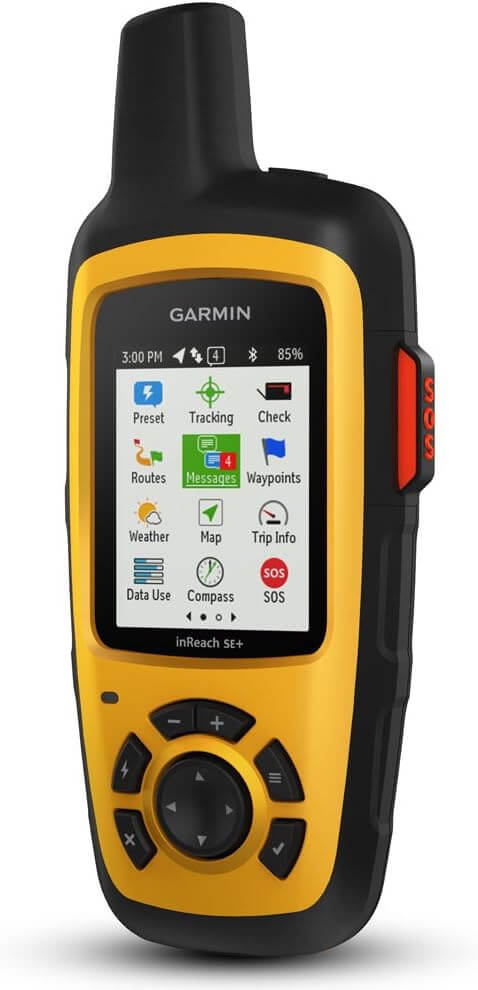
The Garmin inReach SE+ goes beyond the typical satellite phone, offering a combination of features attractive to outdoor enthusiasts and adventurers. Developed by Garmin, a leader in GPS technology, the inReach SE+ blends two-way satellite communication with GPS navigation and safety functionalities, making it a versatile tool for off-grid exploration.
Strengths:
- Two-Way Messaging: Unlike some satellite messengers that only allow for outgoing SOS alerts, the inReach SE+ facilitates two-way text messaging. This allows you to stay connected with loved ones back home, send and receive weather updates, and even request help or coordinate rescue efforts if necessary.
- SOS Function with Tracking: A dedicated SOS button on the inReach SE+ sends a distress signal to emergency responders, including your GPS location. This crucial safety feature provides peace of mind knowing help can be dispatched quickly in case of an emergency.
- GPS Navigation: The inReach SE+ boasts basic GPS navigation capabilities. While not as comprehensive as dedicated GPS units, it allows you to view your location on a map, set waypoints, and track your progress during your adventure.
- Compact Design: Compared to bulkier satellite phones, the inReach SE+ is more compact and lightweight. This makes it easier to carry in a backpack or pocket, especially for weight-conscious hikers and backpackers.
- Battery Life: Battery life on the inReach SE+ is generally good, offering up to 100 hours in tracking mode and 30 days in standby mode (depending on usage). This allows for extended use on multi-day adventures without constant worry about running out of power.
Weaknesses:
- Limited Navigation Features: The navigation functionalities of the inReach SE+ are basic compared to dedicated GPS units. It lacks features like topographic maps and advanced route planning capabilities. Avid hikers or backpackers who rely heavily on GPS navigation might find this limiting.
- Subscription Required: Using the inReach SE+ requires a paid subscription plan from Garmin. These plans offer varying levels of messaging and SOS service, adding a recurring cost to owning the device.
- Typing Messages: The inReach SE+ utilizes a small screen and physical buttons for text messaging. While functional, it can be cumbersome and time-consuming to type lengthy messages compared to using a smartphone keyboard.
Considering the Garmin inReach SE+:
The Garmin inReach SE+ is a well-rounded communication and safety device for off-grid adventures. It offers two-way messaging, SOS functionality, basic navigation features, and a compact design. However, its limited navigation capabilities and subscription requirement are important factors to weigh.
Here are some additional points to consider before purchasing:
- Navigation Needs: If advanced GPS features are crucial for your adventures, consider a dedicated GPS unit alongside the inReach SE+ for communication.
- Trip Length: Subscription plans can vary in data allowance. Choose a plan that accommodates the expected length and communication needs of your trips.
- Alternatives: For basic emergency signaling, a Personal Locator Beacon (PLB) might be a more affordable option. However, PLBs don’t offer two-way communication.
Overall, the Garmin inReach SE+ is a compelling option for adventurers seeking a versatile communication and safety tool. Its combination of messaging, SOS functionality, and basic navigation features provides valuable peace of mind and connectivity while exploring the outdoors. However, for users on a tight budget or those who prioritize advanced GPS features, alternative options might be a better fit.
Thuraya X5-Touch
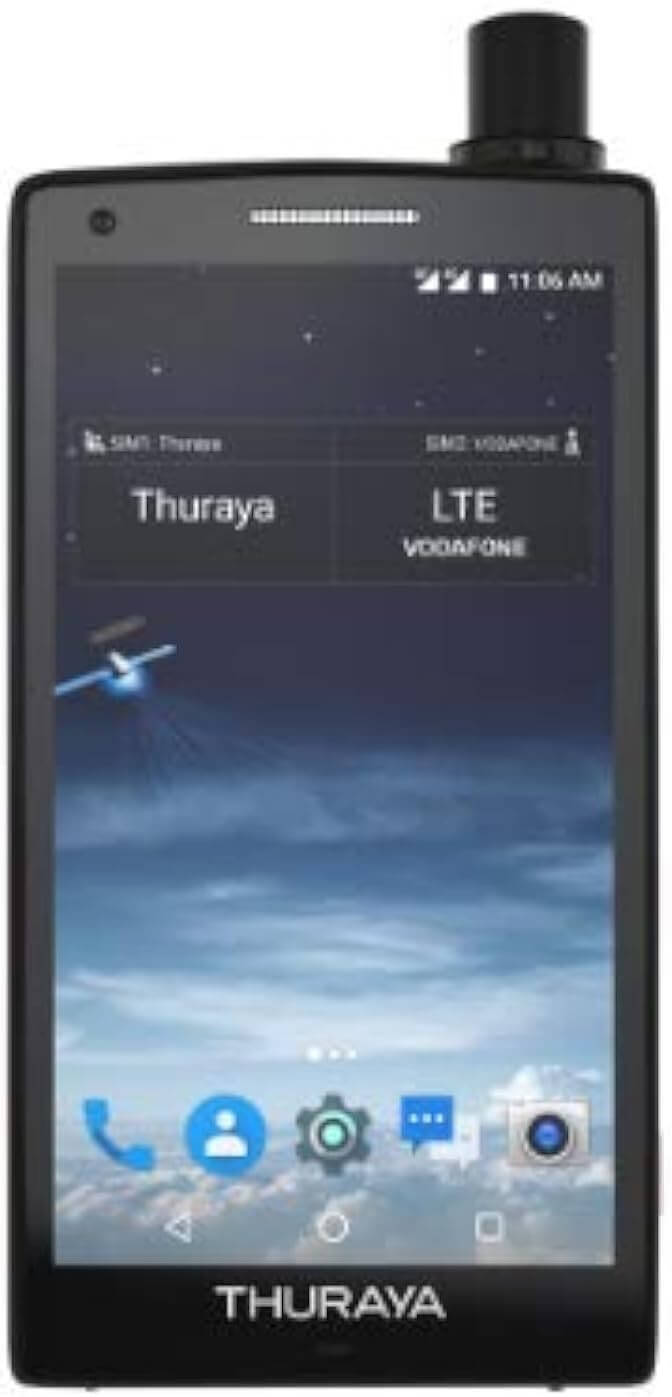
The Thuraya X5-Touch carves a unique niche in the communication landscape. Marketed as the world’s first Android-based satellite phone, it offers the familiarity of a smartphone with the added security of satellite connectivity in remote locations. Developed by Thuraya, a leading provider of satellite communication solutions, the X5-Touch targets users who require both terrestrial and satellite network access during their off-grid adventures or professional endeavors.
Strengths:
- Dual SIM Functionality: The X5-Touch operates with both a standard SIM card for GSM/LTE networks and a dedicated Thuraya SIM for satellite coverage. This allows you to seamlessly switch between terrestrial and satellite networks depending on your location and communication needs.
- Android Platform: Running on the Android Nougat operating system, the X5-Touch offers access to a familiar interface and a wide range of downloadable apps. This makes it more versatile than traditional satellite phones, allowing you to use navigation apps, social media, or productivity tools even in remote areas.
- Rugged Design: Built to withstand the elements, the X5-Touch boasts an IP67 dust and water resistance rating and meets military-grade standards for shock and vibration. This durability makes it a suitable companion for harsh environments.
- SOS Button: A dedicated SOS button provides a critical safety feature. Pressing this button sends a distress signal with your location to emergency response services, offering peace of mind in case of an unexpected situation.
Weaknesses:
- Limited Satellite Network Coverage: Thuraya’s satellite network coverage is concentrated in Europe, Africa, Asia, and Australia. It does not cover North or South America. If your adventures primarily take place in these regions, a different satellite phone provider might be a better choice.
- Bulkier Than Traditional Smartphones: While the X5-Touch boasts a sleek design for a satellite phone, it’s still considerably thicker and heavier than most modern smartphones. This can be a drawback for users prioritizing portability.
- Battery Life: Battery life on the X5-Touch is average compared to traditional smartphones but below par for satellite phones. Extensive use of satellite features can drain the battery quickly, requiring you to carry a power bank or manage your usage carefully on extended trips.
- Software Limitations: Some users report encountering issues with app compatibility and occasional system crashes. The selection of downloadable apps might also be limited compared to the Google Play Store on standard smartphones.
- Cost: The Thuraya X5-Touch itself represents a significant investment. Additionally, satellite service plans can be expensive, with call costs considerably higher than traditional phone plans.
Considering the Thuraya X5-Touch:
The Thuraya X5-Touch is a unique device that bridges the gap between smartphones and satellite phones. Its dual SIM functionality, Android platform, and rugged design make it appealing for users who require both terrestrial and satellite connectivity. However, limited network coverage, size, battery life, software quirks, and high costs are crucial factors to consider.
Here are some additional points to ponder before purchasing:
- Satellite Network Needs: Research Thuraya’s satellite coverage to ensure it aligns with your intended usage locations.
- Alternatives: If satellite coverage or budget is a major concern, consider alternative options like traditional satellite phones or satellite messengers.
- Tech Savvy Users: The X5-Touch might be better suited for users comfortable with troubleshooting occasional software issues.
Overall, the Thuraya X5-Touch is an innovative option for tech-savvy adventurers and professionals who demand both smartphone functionality and satellite connectivity in specific regions. However, for users with broader travel needs, tighter budgets, or a preference for a more traditional satellite phone experience, alternative solutions might be more fitting.
Globalstar GSP-1700
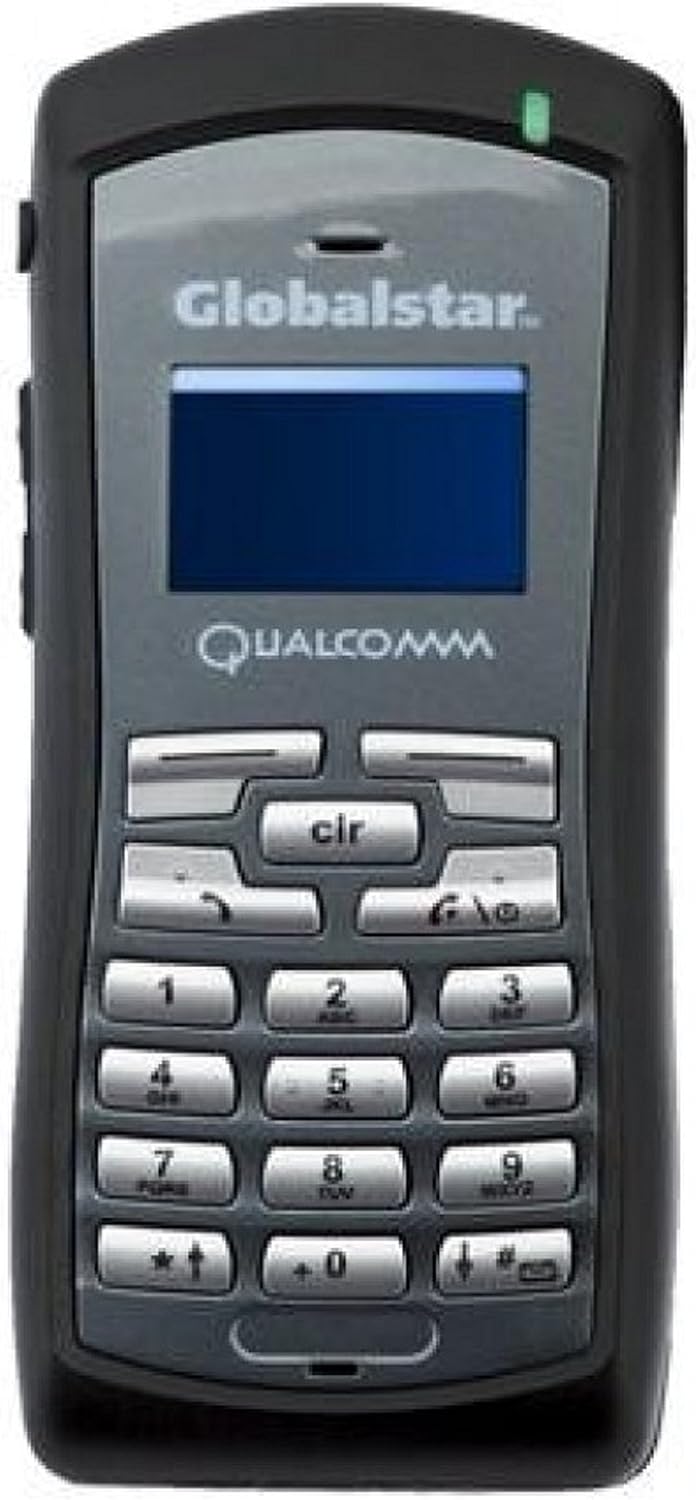
The Globalstar GSP-1700 is a no-frills satellite phone designed for basic communication in remote locations. Manufactured by Globalstar, a leading provider of satellite communication services, the GSP-1700 offers a cost-effective way to make calls and send SMS messages from virtually anywhere on Earth. While it lacks the advanced features of some newer satellite phones, it remains a popular choice for budget-minded adventurers and those seeking a simple solution for off-grid connectivity.
Strengths:
- Affordability: Compared to other satellite phones, the Globalstar GSP-1700 is a more affordable option. This makes it attractive for occasional users or those on a tight budget who only require basic communication capabilities when venturing off-grid.
- Global Coverage: The GSP-1700 leverages Globalstar’s satellite network, offering coverage across the globe. This ensures you can stay connected, no matter how remote your adventure takes you.
- Simple Operation: The GSP-1700 boasts a user-friendly interface with clear buttons and a basic display. There are no complex menus or features to navigate, making it easy to use even for those unfamiliar with satellite phones.
- Prepaid Option: Globalstar offers prepaid service plans for the GSP-1700. This allows you to pay for the minutes you need upfront, avoiding the commitment of a monthly contract.
Weaknesses:
- Limited Features: The GSP-1700 is a basic satellite phone. It lacks features like GPS navigation, data transmission, or two-way texting capabilities found in more advanced models.
- Bulkier Design: While not the heaviest satellite phone, the GSP-1700 has a larger and bulkier design compared to modern smartphones. This can be a drawback for users prioritizing portability.
- Lower Call Quality: Some user reviews mention occasional call quality issues, with reports of static or dropped calls.
- Battery Life: The battery life on the GSP-1700 is average, offering talk time around 4 hours and standby time around 36 hours. Heavy use can drain the battery quickly, requiring a power bank or strategic use on extended trips.
- Service Cost: Satellite service, even with prepaid plans, can be expensive. Call costs are significantly higher than traditional cell phone plans.
Considering the Globalstar GSP-1700:
The Globalstar GSP-1700 is a solid choice for users who prioritize affordability and basic communication capabilities in remote locations. It’s a good option for occasional adventurers, backcountry workers, or those seeking peace of mind knowing they can make calls in an emergency, no matter where they are. However, users seeking advanced features, top-notch call quality, or a slim design might find other satellite phone options more suitable.
Here are some additional factors to consider before purchasing:
- Frequency of Use: If you only venture off-grid occasionally, a prepaid plan for the GSP-1700 might be more cost-effective than a pricier phone with a monthly contract.
- Alternatives: Consider options like satellite messengers or PLBs (Personal Locator Beacons) for basic emergency signaling if two-way communication is not crucial.
- Call Needs: Evaluate your expected call volume and budget to determine if the higher call costs associated with satellite service are justifiable for your needs.
Overall, the Globalstar GSP-1700 is a dependable and affordable option for basic satellite communication. However, its lack of advanced features, bulkier design, and higher service costs are important considerations before purchasing.
Spot X PLB
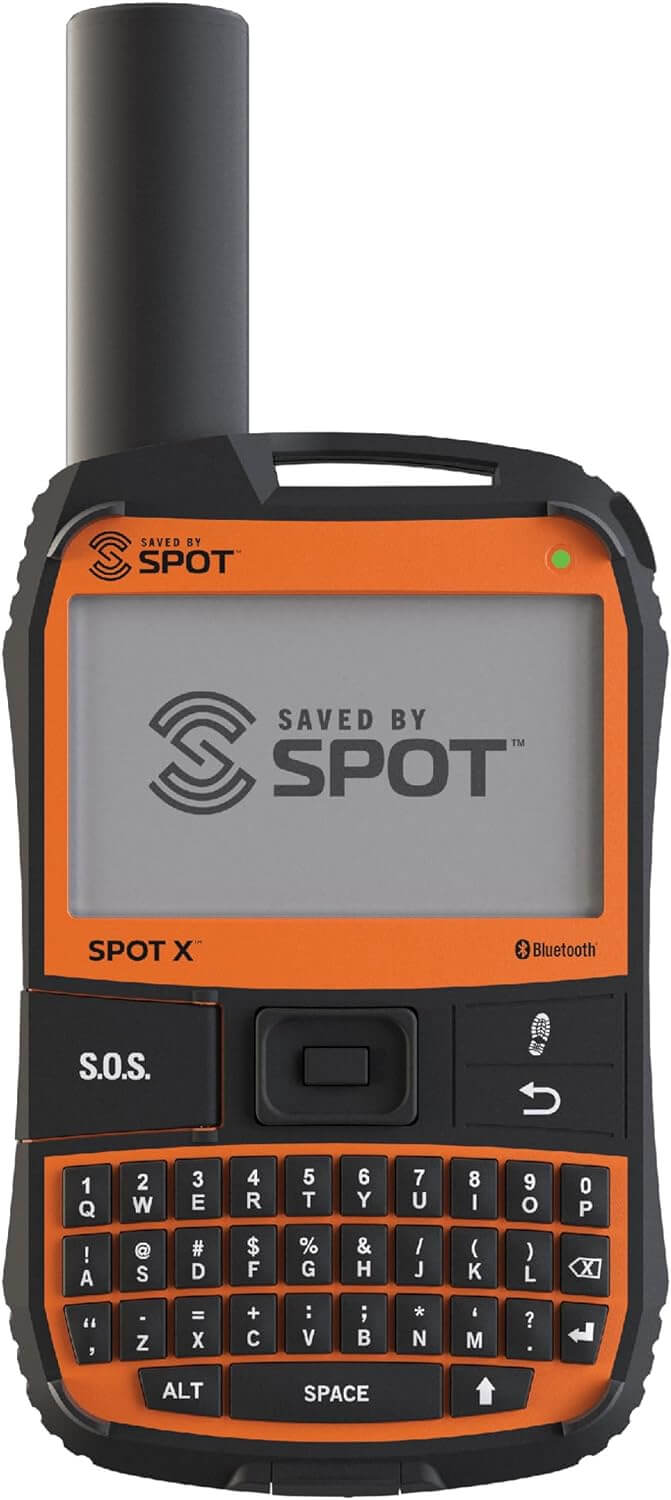
The Spot X PLB (Personal Locator Beacon) is a no-nonsense device designed for one crucial purpose: sending distress signals in case of an emergency in remote locations. Manufactured by Spot, a well-known provider of satellite communication solutions, the Spot X PLB offers a simple and reliable way to alert search and rescue services when you need help most. While it doesn’t provide two-way communication like satellite phones, the Spot X PLB is a valuable safety tool for anyone venturing into the backcountry.
Strengths:
- Simplicity: The Spot X PLB boasts a user-friendly design with large, clearly labeled buttons. There are no complex menus or features to navigate. In a critical situation, even someone unfamiliar with the device can quickly send a distress signal.
- Global Coverage: The Spot X PLB leverages the Iridium satellite network, offering reliable coverage virtually anywhere on Earth. This ensures help can be dispatched no matter where your emergency occurs.
- Durability: Built to withstand harsh conditions, the Spot X PLB is water-resistant, dustproof, and can survive extreme temperatures. This ensures it will function when you need it most.
- Compact Design: The Spot X PLB is lightweight and compact, making it easy to carry in a backpack or pocket without adding significant weight or bulk.
- Subscription Options: Spot offers various subscription plans for the X PLB, allowing you to choose the duration of coverage that best suits your needs.
Weaknesses:
- One-Way Communication: Unlike satellite phones or messengers, the Spot X PLB only transmits a distress signal. It doesn’t allow for two-way communication with rescue services.
- Limited Functionality: The Spot X PLB is designed solely for emergency signaling. It doesn’t offer features like GPS location sharing, weather updates, or check-in messages.
- Subscription Required: Using the Spot X PLB requires a paid subscription plan, adding a recurring cost to owning the device.
- User Activation: The Spot X PLB requires manual activation by the user in case of an emergency. This might not be feasible in situations where the user is incapacitated.
Considering the Spot X PLB:
The Spot X PLB is a valuable safety tool for anyone venturing into remote locations, particularly for solo adventurers or those engaging in high-risk activities. Its simplicity, global coverage, durability, and compact design make it a reliable companion for peace of mind. However, its one-way communication and lack of additional features are important limitations to consider.
Here are some additional factors to consider before purchasing:
- Trip Types: If you frequently explore remote areas, a Spot X PLB can provide essential safety backup.
- Alternatives: For situations where two-way communication with rescue services is desired, consider satellite phones or messengers.
- Group Safety: The Spot X PLB is a personal device. For group safety, consider carrying additional PLBs or communication devices.
Overall, the Spot X PLB is a straightforward and reliable tool for emergency signaling in remote locations. However, for users requiring two-way communication or additional features, alternative options might be more suitable.
Conclusion
Staying connected, even in the most remote locations, can be crucial for safety and peace of mind. This review explored five communication options for off-grid adventures:
- Iridium 9555: A reliable and robust satellite phone with unparalleled global coverage, ideal for serious adventurers and professionals.
- Garmin inReach SE+: A multi-functional device combining two-way messaging, SOS functionality, and basic GPS navigation, perfect for outdoor enthusiasts.
- Thuraya X5-Touch: A unique option blending smartphone functionality with satellite connectivity, best suited for tech-savvy users in regions covered by Thuraya’s network.
- Globalstar GSP-1700: An affordable and user-friendly basic satellite phone for occasional use or those prioritizing budget.
- Spot X PLB: A simple and compact Personal Locator Beacon for sending distress signals in emergencies, ideal for backcountry safety.
The best choice for you depends on your specific needs and priorities. Consider factors like frequency of use, budget, desired features (two-way communication, GPS navigation, etc.), and the regions you’ll be visiting. No matter which option you choose, remember to research service plans and coverage areas to ensure your chosen communication tool keeps you connected and safe during your off-grid adventures.


